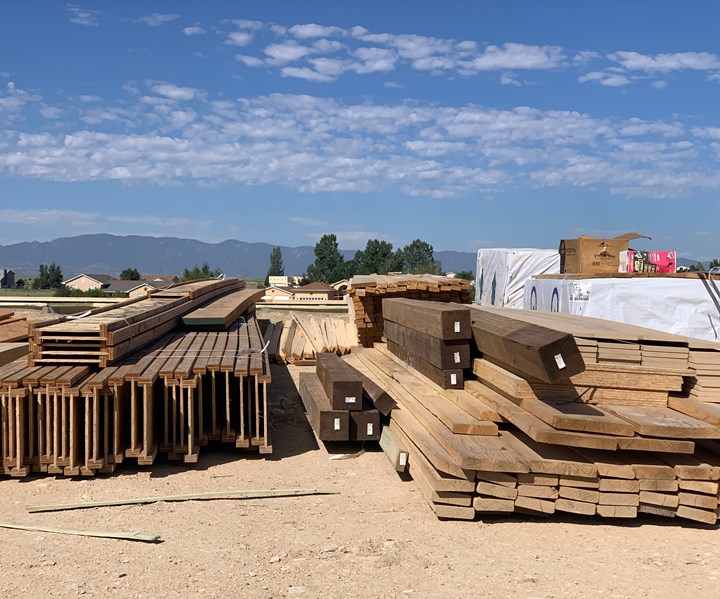Advanced Composites for Sturdy and Light-weight Building And Construction
Advanced Composites for Sturdy and Light-weight Building And Construction
Blog Article
Opening the Environmental Benefits of Recycled Composites in Building and Layout
In the realm of construction and design, the usage of recycled composites holds considerable guarantee for improving sustainability practices and decreasing environmental influence (composites). By including these innovative products, there is a potential to deal with critical issues such as waste minimization, energy preservation, and a decrease in carbon footprint. The change towards a more sustainable future in these industries hinges on unlocking the full potential of recycled composites. This discussion will certainly check out the diverse advantages and challenges connected with incorporating recycled composites into construction and layout, using a glance into the transformative opportunities that exist in advance.

Ecological Influence Reduction
The decrease of ecological effect via the use of recycled composites in construction and design plays a vital role in sustainable practices. By incorporating recycled compounds right into structure materials, the building market can considerably lower its carbon footprint and contribute to an extra eco-friendly future. These sustainable materials, made from repurposed plastics, wood fibers, or various other recycled aspects, use a feasible option to typical construction products without compromising on quality or durability.
Recycled compounds assist draw away waste from garbage dumps and lower the requirement for drawing out basic materials, therefore conserving natural deposits. In addition, the manufacturing process of these composites typically consumes less power and sends out less greenhouse gases contrasted to producing virgin materials (composites). This shift in the direction of utilizing recycled composites not just decreases environmental injury however additionally advertises a round economic climate by encouraging the reuse of materials that would or else be thrown out
Waste Minimization
With a concentrate on reducing waste in building and design, the combination of recycled compounds provides a sustainable service to lower ecological impact. Waste minimization is a vital aspect of sustainable practices, and making use of recycled composites offers a possibility to achieve this goal effectively. By making use of materials that have actually already offered their first objective, such as recycled plastics or reclaimed timber fibers, the construction and layout markets can substantially lower the quantity of waste created and sent to land fills.
Recycled compounds have the prospective to divert significant quantities of waste from standard disposal methods, contributing to a more round economic climate where sources are made use of effectively. Additionally, the production process of recycled composites typically takes in much less energy and generates fewer emissions contrasted to virgin products, better decreasing the ecological footprint of building and layout jobs.
Implementing waste minimization methods with the incorporation of recycled compounds not just assists in preserving natural deposits but likewise promotes a more lasting technique to building and designing for a greener future.
Energy Preservation
Incorporating recycled compounds not just lessens waste in building and layout however additionally plays an essential function in improving energy conservation practices within the market. The usage of recycled compounds in building and see post construction can dramatically contribute to power preservation through different methods. By advertising the usage of recycled composites in building and design, the market can make considerable strides towards achieving power effectiveness and minimizing its carbon footprint, ultimately contributing to an extra sustainable constructed environment.
Carbon Footprint Reduction
Enhancing sustainability practices through the application of recycled composites in building and construction and layout considerably reduces the carbon impact of the industry. By incorporating recycled materials into the manufacturing of composites, the requirement for virgin resources decreases, bring about reduced energy usage and greenhouse gas discharges related to traditional manufacturing processes. This reduction in carbon impact is crucial in combating climate adjustment and advertising an extra eco-friendly technique to building and construction and design.
The carbon footprint decrease accomplished through the adoption of recycled composites aligns with the international push towards lasting practices and the reduction of industrial emissions. Eventually, by prioritizing the combination of recycled compounds, the market can make considerable strides in decreasing its carbon footprint and contributing to a much more sustainable future.
Sustainable Future
The integration of recycled composites in building and construction and design not just addresses prompt environmental issues yet likewise lays a strong structure for a lasting future in the sector. By integrating recycled composites into structure products and products, the construction and try here layout fields can dramatically lower their dependence on virgin resources, leading to a more circular economy. This change in the direction of sustainability is crucial for minimizing the ecological impact of conventional building techniques, which commonly lead to high degrees of waste generation and source deficiency.

Conclusion
Finally, recycled composites use considerable ecological advantages in building and design by reducing environmental influence, lessening waste, preserving energy, reducing carbon impact, and advertising a sustainable future. Accepting using recycled composites can contribute to a much more environmentally-friendly strategy to building and design, ultimately bring about a much more lasting and greener future for all.
The decrease of environmental influence via the usage of recycled composites in construction and style plays an essential duty in sustainable methods.With an emphasis on lessening waste in building and construction and design, the assimilation of recycled composites provides a sustainable remedy to minimize ecological effect. By promoting the usage of recycled composites in building you could try these out and design, the industry can make substantial strides in the direction of attaining power effectiveness and decreasing its carbon footprint, ultimately adding to a more lasting developed setting.

Report this page